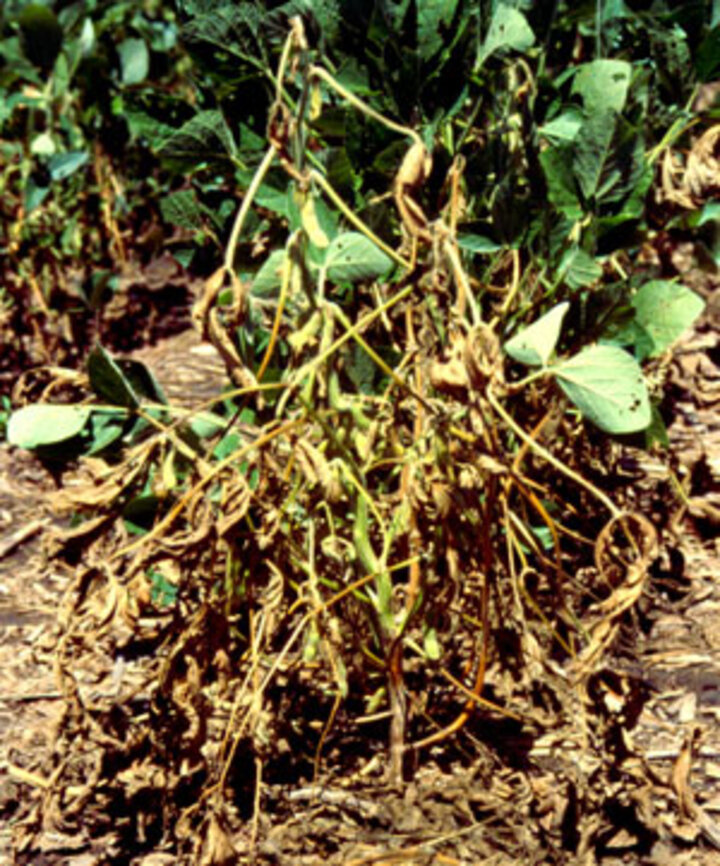July 31, 2009
|
Note which fields have Phytophthora and next year select soybean varieties with resistance and/or tolerance to the disease for these fields.
|
Recent rains in some areas of the state have been timely for soybean development and, unfortunately, favorable for Phytophthora root and stem rot. We observed the disease to a lesser extent earlier this year but now are receiving more calls and samples are being submitted to the Plant and Pest Diagnostic Lab.
When we have randomly sampled soybean fields in the past, we have found Phytophthora in 12% of Nebraska fields. While it's not everywhere in the state, it can be anywhere.
Factors Favoring Disease Development
In most cases symptoms started to develop within a week of a heavy rain or a saturated soil. Over the past several years we have observed that fields with light drought stress followed by heavy rains tend to develop more Phytophthora. My hypothesis is that drought stress reduces the plant’s defense mechanisms and then, when high moisture situations develop, the plant is more susceptible to disease. This is definitely an area that needs further investigation.
Curbing Future Problems
While there is no fungicide treatment to prevent further damage this season, producers should keep records on which fields had Phytophthora and select soybean varieties with resistance and/or tolerance to the disease for planting in 2010. Fungicide seed treatments also can be beneficial. For fields in corn-soybean rotations, note that this disease will not affect corn.
|
Resource
For more information on this disease, seed treatments, and genetic resistance, see the UNL Extension NebGuide, Management of Phytophthora Diseases of Soybean (G1785).
Loren J. Giesler
Extension Plant Pathologist

